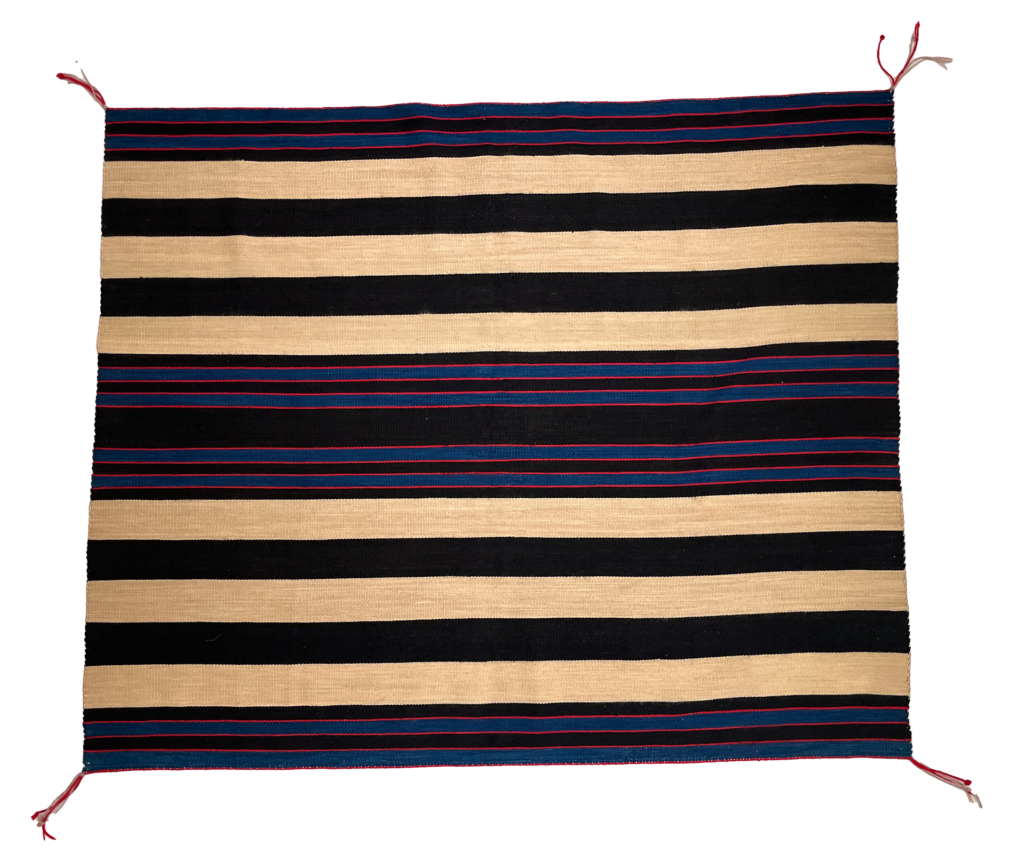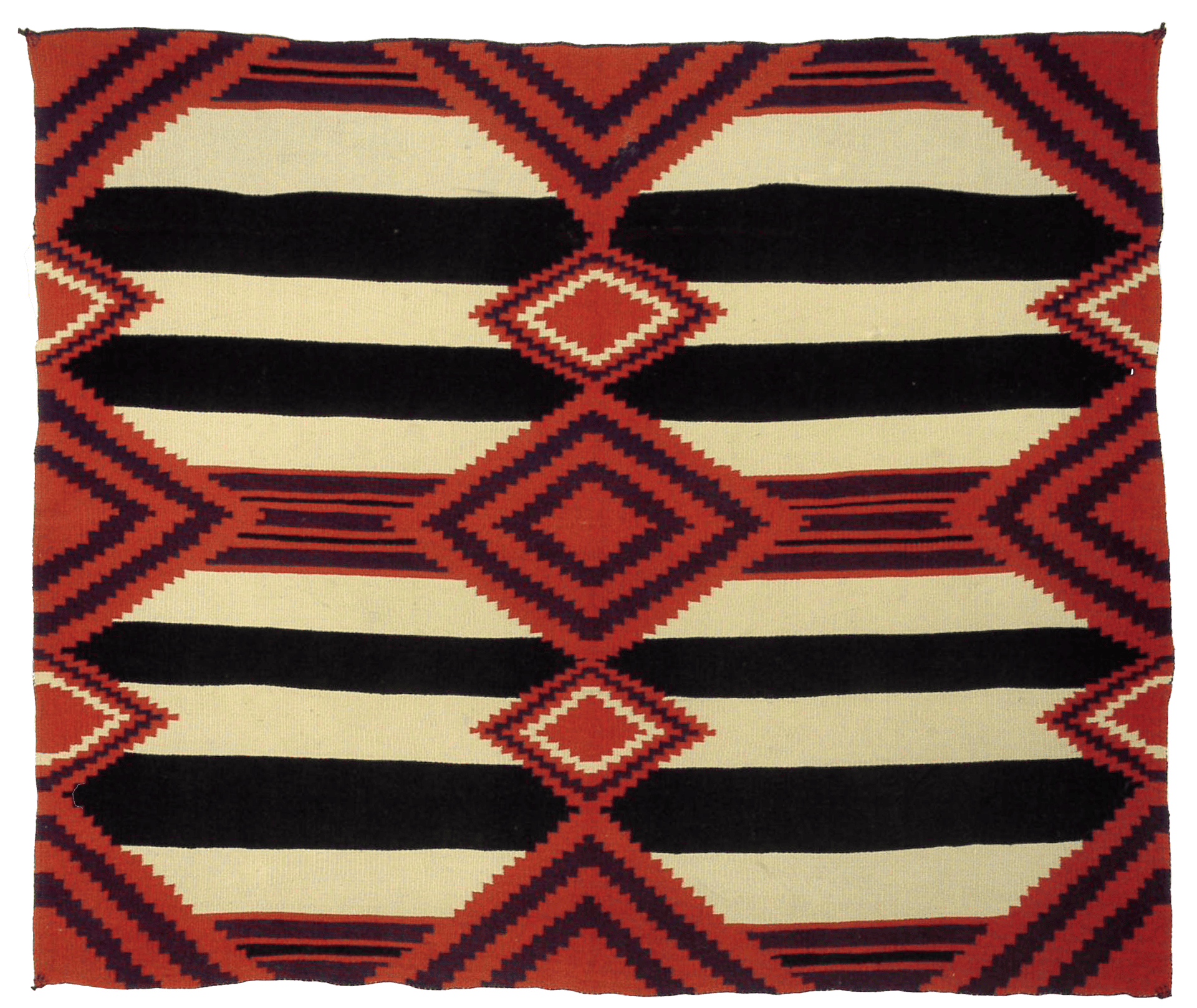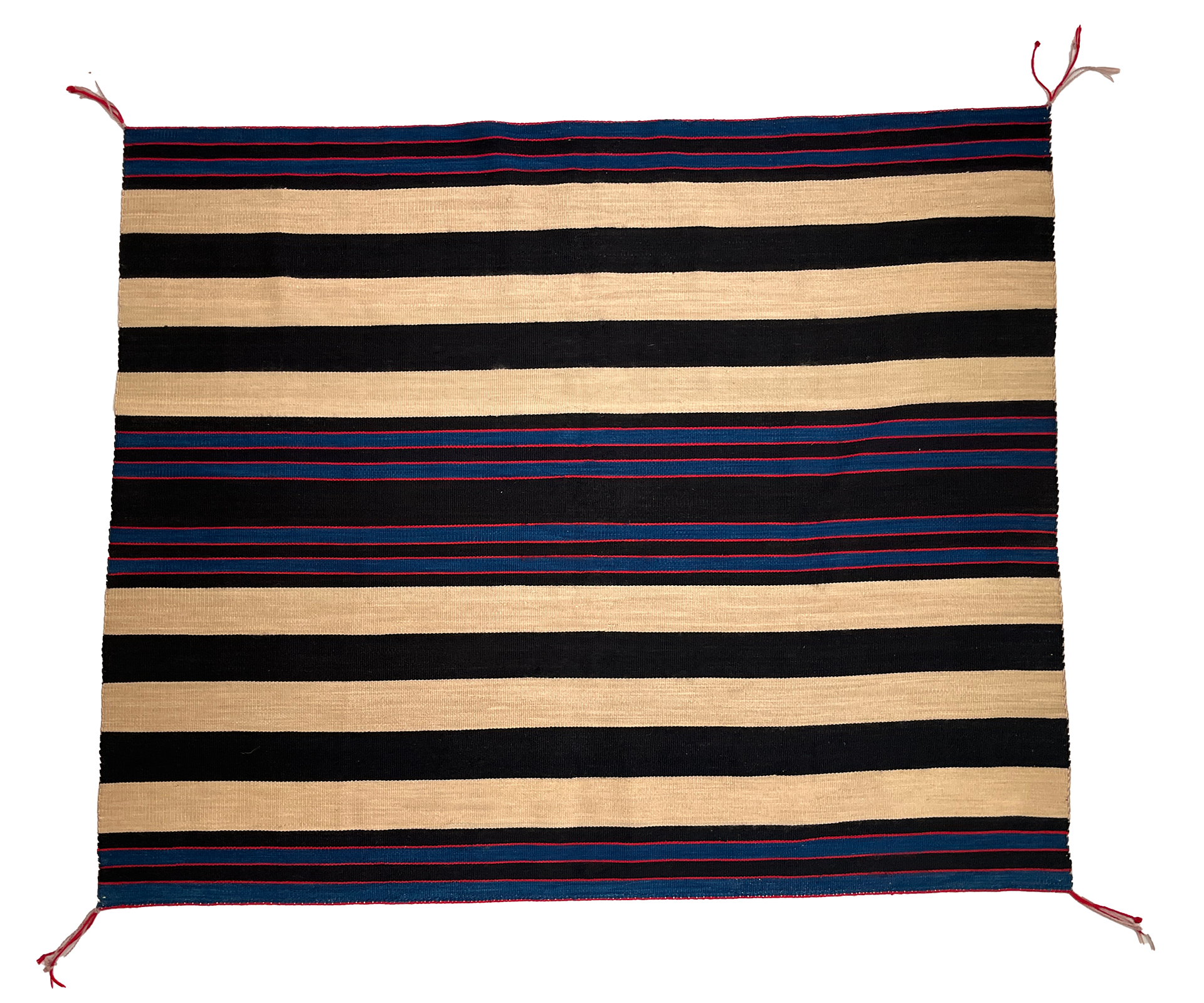Some information may be outdated.
“The People’s Tapestry: Weaving Tradition in Navajo Culture” is now on display at the Moab Museum, featuring a variety of styles of Navajo textiles, including the Chief Blanket. In this column throughout the summer, the Museum team will feature a variety of weaving styles and their associated backgrounds and stories.
This exhibition is a celebration of the magnificent weavings created by the Diné (which means “the people” in Navajo). The significance of Diné textiles transcends artistic expression; weavers beautify their world through the spiritual act of weaving and integrate their art into the web of everyday life. The Navajo weaver’s song declares, “with beauty, it is woven.”
What makes the Chief Blanket a distinct weaving style?
The term “Chief Blanket” comes from the wearers of the textiles themselves: because of the caliber of weaving and the expensive materials utilized, this style became an indicator of wealth and status, and they were initially only worn by Native American chiefs. The scope of who wore these blankets expanded over time, however, with the gradual inclusion of wealthy military members, travelers, and white people, though they were almost exclusively worn by men.
This weaving style relies on the fine balance of line and color placement and is highly sought after by collectors and private buyers. Instead of being displayed as a rug or tapestry, the weaving is designed to be worn, draped across the body, where the movement of the human body underneath breathes life into the otherwise static design.



What accounts for the variations in pattern?
The oldest known Chief Blanket dates back to a Navajo grave from 1775. The style was widely worn and traded by Southwestern tribes, specifically the buffalo hunters of the Plains and Intermountain West.
By 1800, the First Phase Chief Blanket had been developed as a distinct weaving style, traded and favored by the Ute and Sioux, who wore the blanket in the stead of buffalo hides typically used as drapes across the body. During this phase, weavers began to outline stripes in blue or indigo, a color which came from trade with Mexico, with a thin line of crimson “bayeta,” a red flannel cloth that had been unraveled and re-spun, deriving its color from the Mesoamerican cochineal beetle.
By 1850, the Second Phase Chief Blanket emerged, shifting the crimson stripes to rectangular blocks that interrupt the blue lines at the ends and center of the weaving. Second phase blankets are the least commonly known.
Between 1860 and 1870, the Third Phase Chief Blanket emerged; the majority of Chief Blankets are in this style. This phase features a pattern of nine diamonds or cross formations.
In the fourth and final phase of Chief Blankets (though it is not always recognized as distinct from the third), which emerged after 1870, weavers introduced pictorial elements, such as “horse-mounted warriors,” according to “Blanket Weaving in the Southwest” by Joe Ben Wheat. Collectors often consider this to be the most “artistic” time frame.
Is there meaning behind the simplicity?
The design of the Chief Blanket “embodies the Diné aesthetic of harmony and balance,” or hózhóó, according to Shelby J. Tisdale’s “Spider Woman’s Gift,” explaining the symmetry and balance found in these weavings.
The Moab Museum is dedicated to sharing stories of the natural and human history of the Moab area. This is part of a series highlighting distinct textiles and styles displayed in the Museum’s temporary exhibition “The People’s Tapestry,” displayed summer-winter 2023. To explore more of Moab’s stories and artifacts, find out about upcoming programs, and become a Member, visit www.moabmuseum.org.
Appreciate the coverage? Help keep local news alive.
Chip in to support the Moab Sun News.





